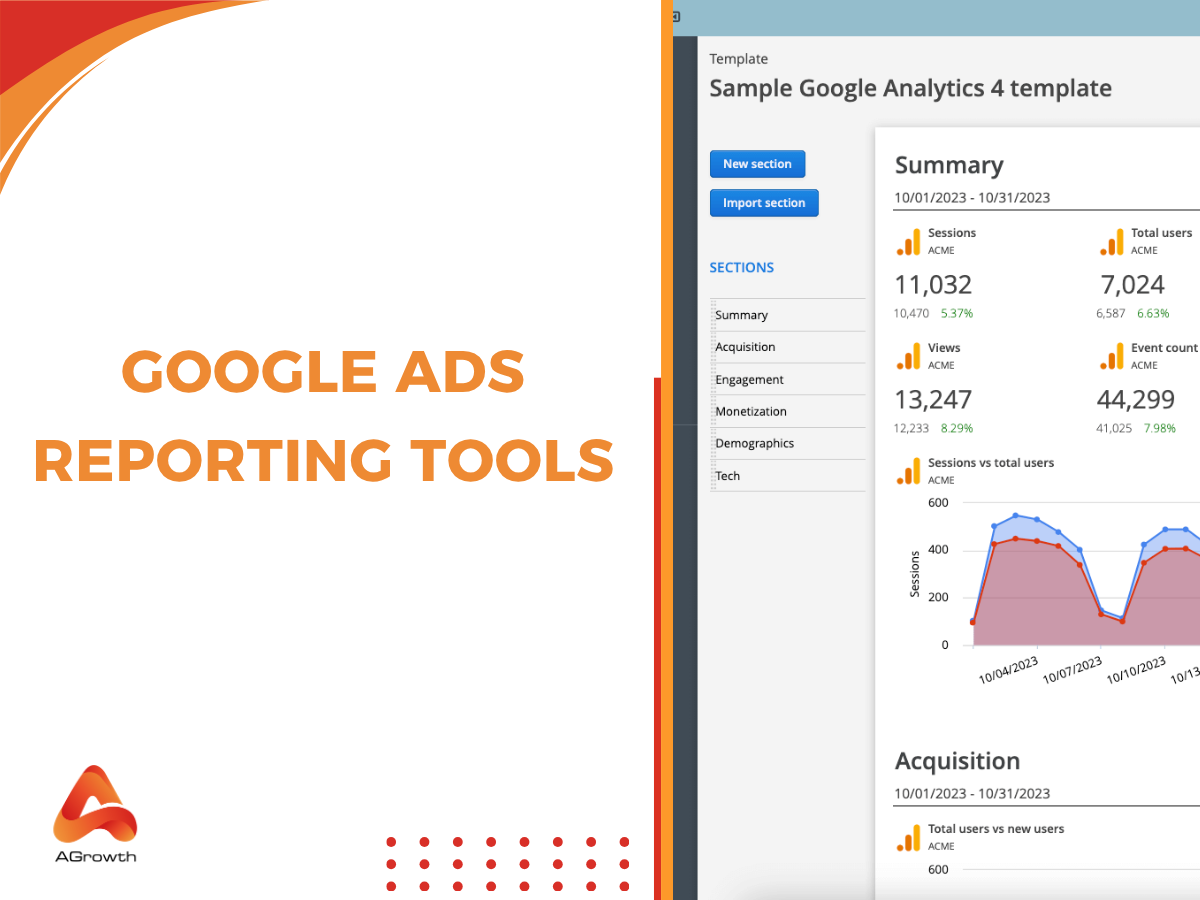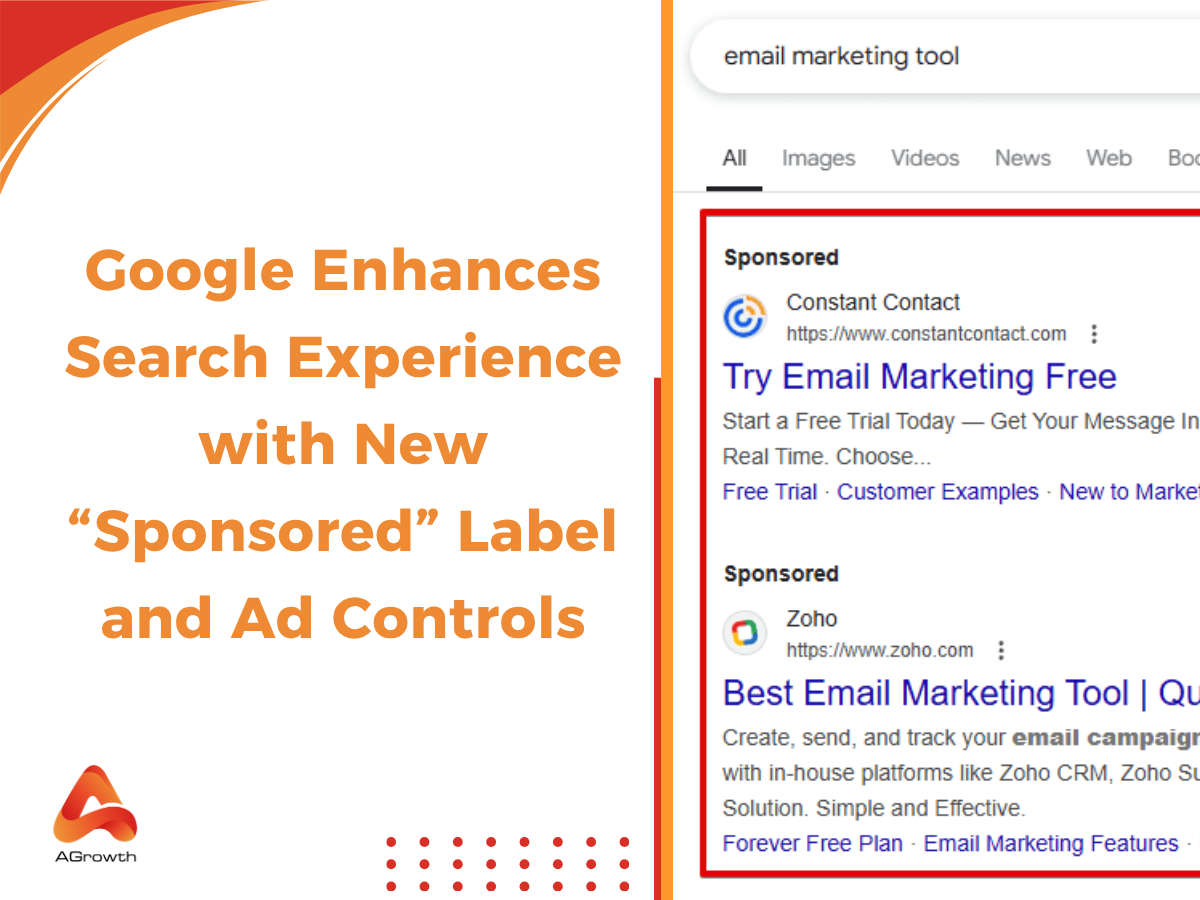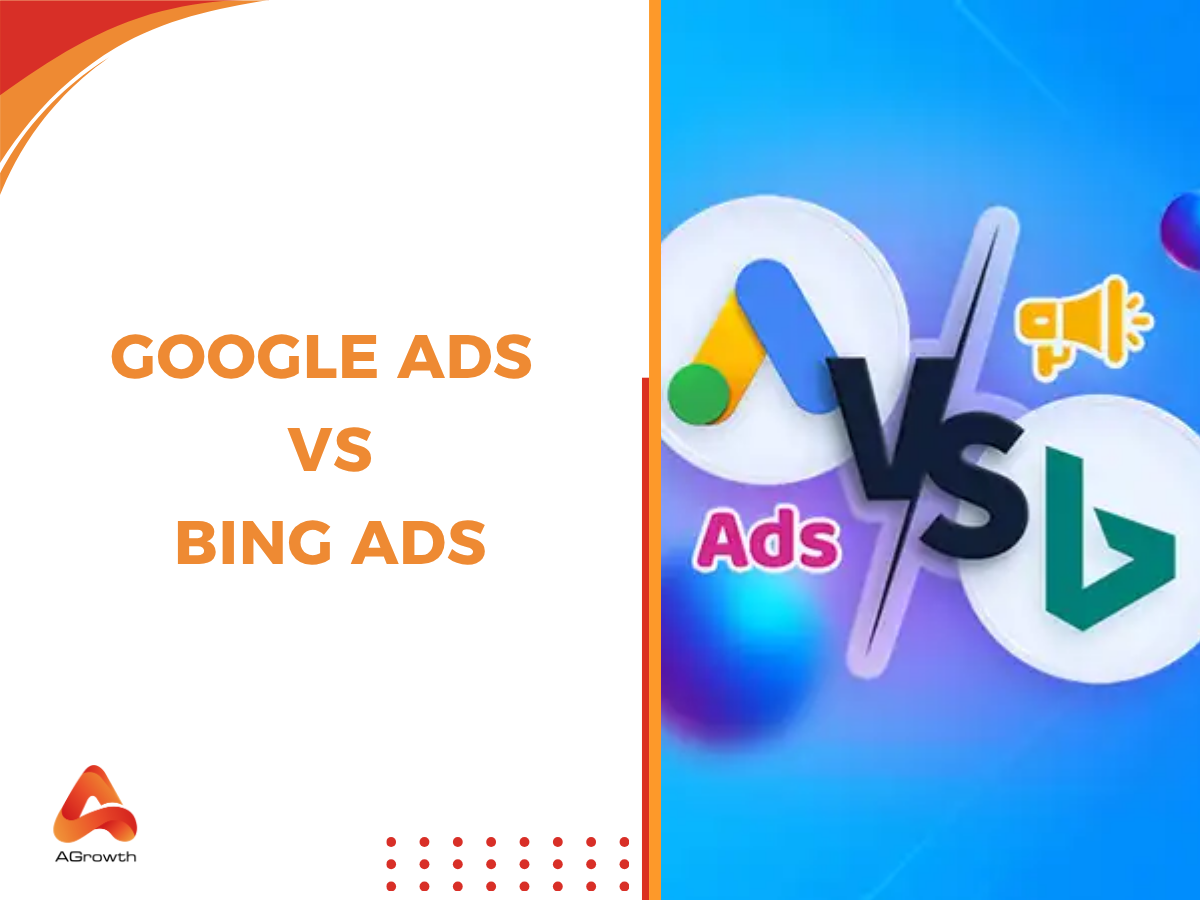
Table of Contents
Google Ads Budget Optimization: Spend Smarter, Maximize Results
Running Google Ads effectively is about knowing how to allocate your budget strategically. A poorly managed budget can burn through your funds quickly without delivering meaningful results, while a well-optimized budget ensures that every dollar works harder for you. Google itself highlights that advertisers should constantly monitor how budgets are spent, since overspending or underspending can directly affect impression share and campaign reach.
This guide explores the nuanced strategies and critical metrics that enable advertisers to transform their budget from a mere expense into a high-powered engine for growth, ensuring every dollar works tirelessly towards achieving their marketing objectives.
What is a Google Ads Budget?
A Google Ads budget is the maximum amount you are willing to spend on your campaigns within a given timeframe. Advertisers usually set this daily, but it can also be monitored and controlled monthly.
According to Google: “Your average daily budget is the amount you're willing to spend each day, on average, for a campaign.”
In other words, your budget acts as the spending cap that directs how often your ads appear and how widely they can reach.
How do Google Ads budgets work?
Google uses your budget to decide how often your ads enter auctions. While you set a daily budget, Google may spend up to twice your daily budget on high-traffic days, but balances this by spending less on slower days — ensuring your monthly spend doesn’t exceed the limit you’ve set.
Understanding this mechanism is crucial because it explains why, on some days, you see more clicks and impressions, while others may seem under-delivered. This balancing act is part of how Google helps you maximize exposure within the set limit.
Setting a budget is the first step. The next step is understanding what drives the final bill. Get the full breakdown in our guide to Google Ads Cost.
Why Budget Optimization Matters in Google Ads
Budget optimization isn’t just about cutting costs. It’s about ensuring your spending aligns with business goals. Let’s break down the key reasons.
-
Avoiding overspend and underspend
Overspending leads to wasted resources on underperforming campaigns, while underspending may cause you to miss valuable traffic and conversions. Optimization ensures balance. -
Balancing across campaigns and ad groups
Not all campaigns are equal. Some bring higher ROI, while others serve branding purposes. Optimization allows you to allocate budgets where they create the most impact. -
Ensuring a positive ROAS
Your return on ad spend (ROAS) is a critical measure of efficiency. A well-optimized budget helps you hit profitability thresholds.
Learn more about Google Ads ROAS!
-
Staying competitive in auctions
Google Ads works as a live auction. If your budget is too low, your ads may drop out of auctions at peak times, leading to lost impression share and fewer conversions. -
Smoother scaling
If your goal is growth, optimized budgets create a foundation for scaling without inflating CPA (cost per acquisition).
Key Factors Influencing Budget Efficiency
Once you understand why optimization matters, the next step is knowing what drives efficiency. Let’s explore the main factors.
Cost per Click (CPC) & Bid Strategy
CPC is the most direct driver of budget efficiency. High CPCs eat into your budget quickly. Choosing the right bid strategy (manual vs. automated) can lower CPC while maintaining competitiveness.
For instance, a Maximize Conversions strategy may deliver better Google Ad ROI when conversion tracking is solid, while Target CPA ensures you don’t overspend for each acquisition.
Conversion Rate (CVR) & Cost per Conversion
A high CPC isn’t necessarily bad if your conversion rate is strong. What matters most is your cost per conversion (CPA). Budget efficiency is about balancing CPC and CVR to achieve a sustainable CPA.
Impression Share & Lost IS (Budget)
Google reports impression share lost due to budget as a metric. If your campaigns consistently lose impressions because of budget, it signals missed opportunities that could be recaptured by reallocation.
Daily vs Monthly Budget Pacing
Pacing matters. Spending aggressively early in the month can leave you underfunded later when competition rises. Conversely, overly cautious pacing may cause you to miss out on valuable clicks.
Curious about how your campaigns compare to industry standards? Explore the latest Google Ads Benchmarks to see if your performance is on track
How to Manage Google Ad Budget Effectively
Before you can optimize your spend for maximum ROI, you need to understand the practical steps of managing your budget. Good management ensures that your ad dollars are distributed in a controlled way, avoiding waste and giving you the foundation for later optimization. Google Ads provides several budgeting methods and tools, each with unique benefits and potential drawbacks.
Campaign Daily Budgets
Daily budgets are the most common way advertisers manage spend. You assign a maximum daily spend to each campaign, and Google adjusts delivery to stay within this limit.
Pros:
-
Simple to set up and monitor.
-
Flexible—budgets can be adjusted anytime.
-
Helps control pacing on a day-to-day level.
Cons:
-
Google may spend up to twice your daily limit on busy days, which can be alarming if you don’t anticipate it.
-
If the daily cap is too low, campaigns may lose valuable impression share.
Pro Tip: Review performance data weekly and adjust daily budgets for campaigns that consistently drive high ROI. Don’t set and forget—daily budgets require active oversight.
Shared Budgets
Shared budgets allow multiple campaigns to draw from the same pool of funds. This is useful when campaigns share similar goals, such as lead generation or e-commerce sales.
Pros:
-
Saves time by removing the need to micromanage each campaign’s budget.
-
Automatically reallocates spend to the campaigns with more opportunities.
Cons:
-
Stronger campaigns may monopolize the budget, starving others of visibility.
-
Less control if you want to prioritize one campaign over another.
Pro Tip: Use shared budgets for campaigns of equal priority, and avoid mixing high-performing campaigns with experimental ones in the same shared pool.
Campaign Total Budgets
With campaign total budgets, you set a fixed amount for the entire campaign rather than a daily spend. This is common for time-bound campaigns like seasonal promotions or product launches.
Pros:
-
Guarantees you won’t overspend the total allocated amount.
-
Works well for campaigns with a clear start and end date.
Cons:
-
Lacks flexibility for long-term, always-on campaigns.
-
Risk of exhausting the budget too quickly if pacing is not monitored.
Pro Tip: Use Google’s Performance Planner to model different pacing scenarios, ensuring your campaign lasts the entire period without running out of funds prematurely.
Automated Budget Rules
Automated rules let you increase, decrease, or pause budgets based on conditions you define. For example, you might raise a campaign’s daily budget by 20% if CPA stays below a threshold or reduce spend if CTR falls below expectations.
Pros:
-
Saves manual effort and allows faster reactions to performance changes.
-
Helps enforce guardrails on spend without constant monitoring.
Cons:
-
Requires clear performance data; poor tracking can lead to misguided rules.
-
Overly rigid rules may cut opportunities before Google’s algorithm can adjust.
Pro Tip: Start with simple rules (e.g., increase budget slightly on weekends if conversion rates are historically higher) and refine over time as you gather performance insights.
Monthly Account Spend Limits
At the account level, you can set a monthly spend cap. This serves as an additional safeguard to ensure total ad costs never exceed your intended budget.
Pros:
-
Provides peace of mind for finance teams by ensuring total costs stay within budget.
-
Acts as a final safety net if daily budgets or automated rules misfire.
Cons:
-
If set too low, campaigns may stop running mid-month, causing missed opportunities.
-
Not available for every account type.
Pro Tip: Use monthly spend limits in conjunction with campaign-level budgets, not as a replacement. It should function as your backup control, not your primary method of budget management.
AGROWTH - GOOGLE AGENCY ACCOUNT
⭐ Managed campaigns with expert guidance
⭐ Flexible invoice-based billings, custom top-ups
⭐ High resistance to suspension via agency tier
⭐ Quick fund transfer to new account if needed
⭐ Priority support via Google Partner channel
⭐ Lower fees from 3-5%
⭐ Eligible for bonus credit up to $384
How To Optimize Google Ads Budget
Armed with an understanding of the key efficiency metrics, you can now implement advanced strategies to optimize your Google Ads budget actively. Let’s dive into actionable strategies.
Use Historical Data to Predict Future Ad Spend
Your account's history is a goldmine of predictive data. Analyze performance trends over time, paying close attention to seasonality, weekly fluctuations (e.g., B2B performance on weekends vs. weekdays), and the impact of past promotions. By understanding these patterns, you can move from reactive to proactive budget management.
For instance, if you know that conversions historically spike in the last week of the month, you can plan to allocate a larger portion of your budget to that period. Use Google's Performance Planner tool to forecast how budget changes might impact key metrics like clicks and conversions, allowing you to model different scenarios and make informed decisions based on data, not guesswork.
Allocate Your Budget Efficiently for Better Performance
This is the core of active budget optimization. It involves a continuous cycle of analysis and reallocation based on performance data.
-
Prioritize High-ROAS Campaigns: Regularly run reports to identify the campaigns, ad groups, and even keywords that are delivering the highest Return on Ad Spend (ROAS). These are your proven winners. Shift budget away from underperforming areas and reallocate it to these top performers to scale what's already working. A deep dive into your Google Ads ROAS data is the essential first step in this process.
-
Fund Campaigns with Low Lost IS (Budget): Identify your best-performing campaigns that have a significant "Impression Share Lost due to Budget." This is the lowest-hanging fruit for growth. These campaigns have already proven their effectiveness; they simply need more financial resources to capture the demand that already exists. Increasing the budget here often leads to a direct and predictable increase in conversions.
-
Utilize Shared Budgets Strategically: For a group of related campaigns that share a common goal, a shared budget can be an effective tool. Google will automatically allocate the single budget across the campaigns, spending more on those with greater opportunity on any given day. This automates the reallocation process to a degree, ensuring funds flow to where the traffic is, preventing lower-volume campaigns from being starved while high-volume ones hit their cap.
Identify and Fix Lost Impression Share
As mentioned, a high Lost IS (Budget) on a strong campaign is a clear signal to increase spending. However, you also need to analyze Impression Share Lost (Rank). This metric indicates that your ads weren't shown because of a low Ad Rank, which is a function of your bid and Quality Score.
In these cases, simply increasing the budget won't solve the problem. You need to address the underlying issues by improving your Quality Score (through better ad relevance, landing page experience) or adjusting your bid strategy. Fixing a low Ad Rank can make your budget go further by lowering your CPCs and allowing you to enter more auctions for the same cost.
Automate Budgeting for More Effective Management
For complex accounts, manual budget management can be time-consuming and inefficient. Leveraging automation can provide a significant advantage.
-
Automated Rules: Set up automated rules within Google Ads to manage your budgets dynamically. For example, you can create a rule to increase the daily budget by 10% on campaigns that have a CPA below a certain threshold and a Lost IS (Budget) above 20%. Conversely, you can create rules to decrease budgets on campaigns with rising CPAs.
-
Google Ads Scripts: For even more customized control, Google Ads Scripts allow you to use JavaScript to manage budgets based on virtually any performance metric in your account. You can create scripts for advanced pacing, to allocate budgets based on weather data, or to integrate with your internal inventory data.
-
Portfolio Bid Strategies: These strategies group multiple campaigns and use Google's AI to optimize bids and budgets across the entire portfolio to achieve a singular goal, such as a target CPA or ROAS. This approach allows the algorithm to find the most efficient conversions across all included campaigns, automatically shifting spend to the best opportunities in real-time.

Common Google Ads Budget Problems and How to Fix Them
Here are some of the most frequent budget-related challenges advertisers encounter—and practical ways to address them:
1. Campaigns Frequently Overspend
Why it matters: Even though you set a daily budget, Google may exceed it on high-traffic days—potentially leading to monthly overspends if not managed.
Fix it by:
-
Using tools like spend projections to forecast how much you'll likely spend and adjusting daily budgets accordingly. This proactive monitoring allows you to fine-tune budget levels before you exceed limits.
-
Reducing spend on lower-priority campaigns. For example, if your “Retail Campaign” is draining budget but delivering less value, cut back its daily spend and reallocate to higher-converting campaigns.
2. Campaigns Frequently Underspend
Why it matters: Underutilized budgets mean missed traffic, impressions, and conversions. If you consistently underspend, you're likely not maximizing your ROI.
Fix it by:
-
Exploring budget optimization suggestions to test different daily budget levels and see potential performance outcomes—some setups could yield significantly more conversions while better using your budget.
3. Daily Ad Spend is Inconsistent and Fluctuating
Why it matters: If spending swings significantly day-to-day, it becomes hard to predict performance, manage pacing, or plan for consistent results.
Fix it by:
-
Implementing automation tools like Optmyzr’s Flexible Budgets script, which checks hourly spend and can pause campaigns that exceed predefined thresholds—keeping daily costs under control.
-
Applying rules-based adjustments to adapt budgets based on performance signals or calendar triggers (e.g., raising or lowering spend on weekends or holidays).
4. Running Out of Impressions Due to Budget Constraints
Why it matters: Even with a healthy bid and quality score, insufficient budget can limit your presence in auctions—reducing visibility and opportunity.
Fix it by:
-
Reviewing Impression Share lost due to budget metrics to identify campaigns that are missing out.
-
Increasing budgets strategically in campaigns with high potential but insufficient funding—especially those showing high ROI or conversion volume.
5. Over-Allocation Without Clear Control—No Guardrails
Why it matters: Manually monitoring budgets across many campaigns can be error-prone. Without automation, minor oversights can easily result in overspending.
Fix it by:
-
Creating automation-based budget pacing to ensure campaigns don't exceed hourly or daily thresholds.
-
Using rule engines to trigger pauses or resume campaigns based on spend levels—this acts as an automated safety net.
Conclusion
Mastering Google Ads budget optimization is about more than just preventing overspend. It’s about strategically allocating funds to the right campaigns, monitoring key metrics like CPC, ROAS, and impression share, and leveraging automation to keep spending aligned with business goals. When done correctly, budget optimization turns Google Ads from a cost center into a growth engine.
That said, effective budget management requires consistent monitoring, access to advanced tools, and often higher spending limits than a standard account provides. This is where partnering with the right provider makes all the difference.
At AGrowth, we help businesses scale smarter by offering Google Ads agency accounts for rent. With higher credit limits, fewer restrictions, and expert support, you can run campaigns more confidently without worrying about budget caps or wasted spend.
You may also like:
- Google Ad Bidding Strategy
- Google Ad Fraud









Your comment